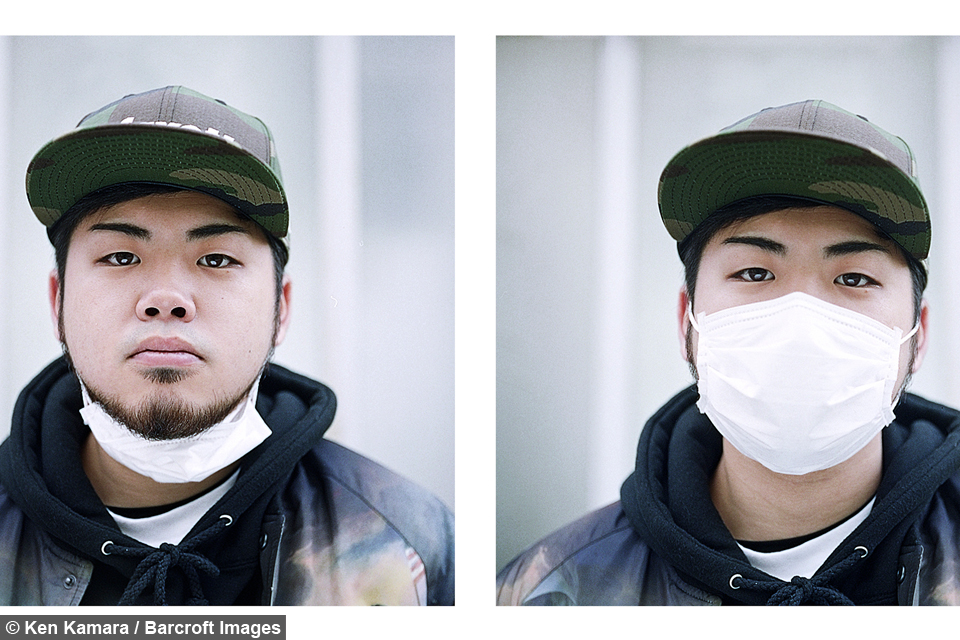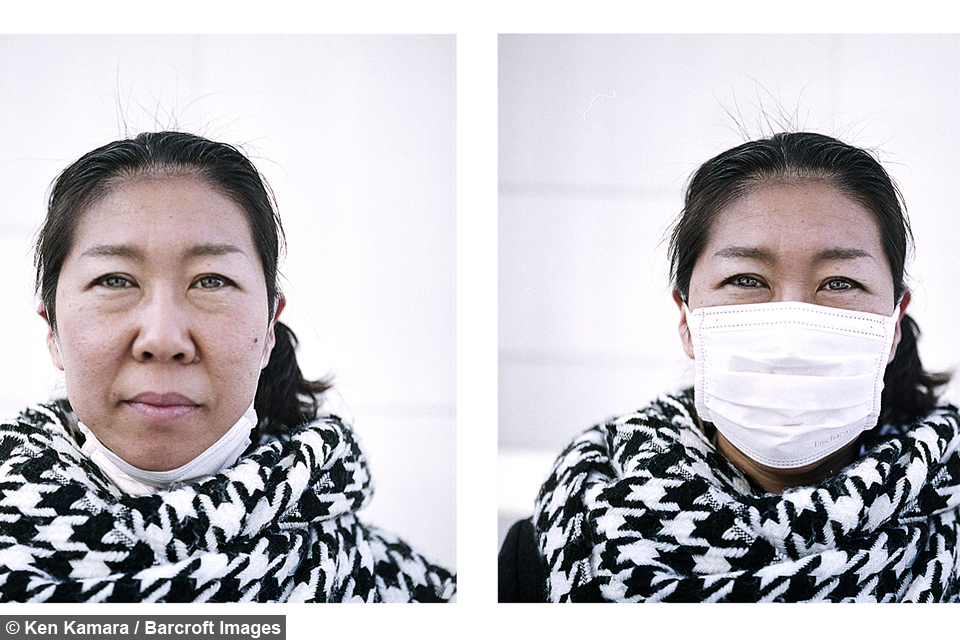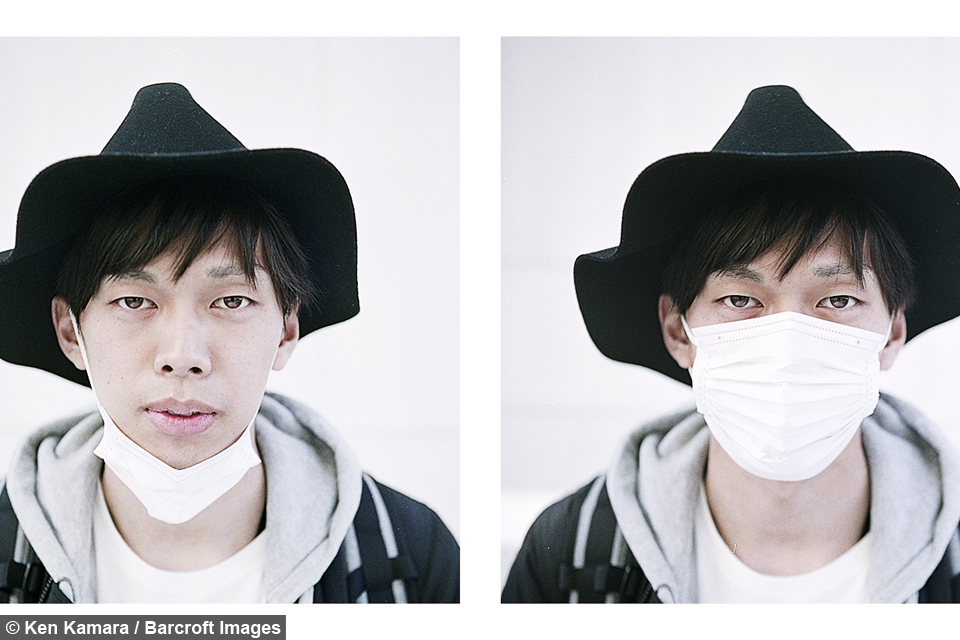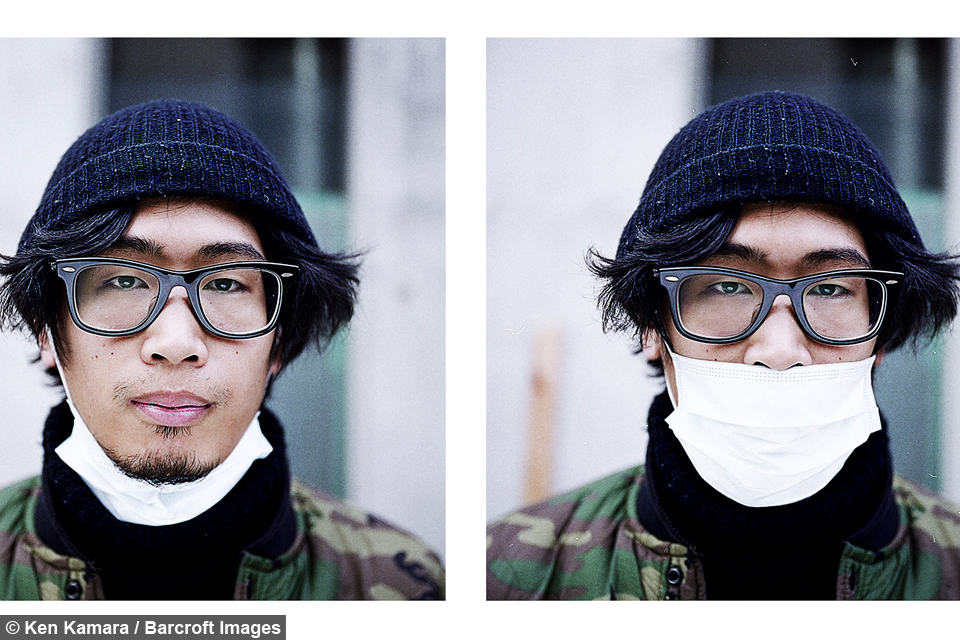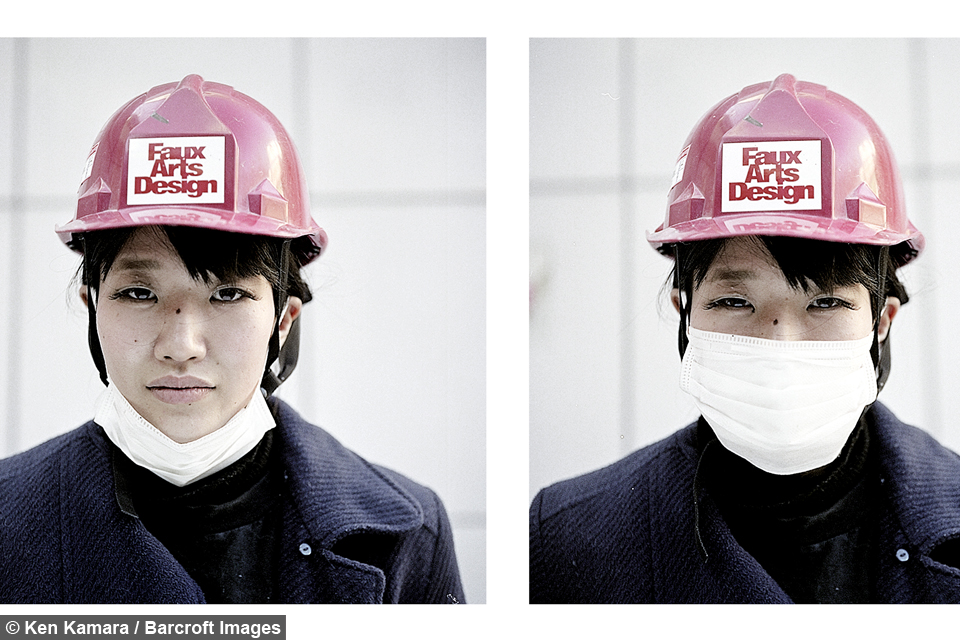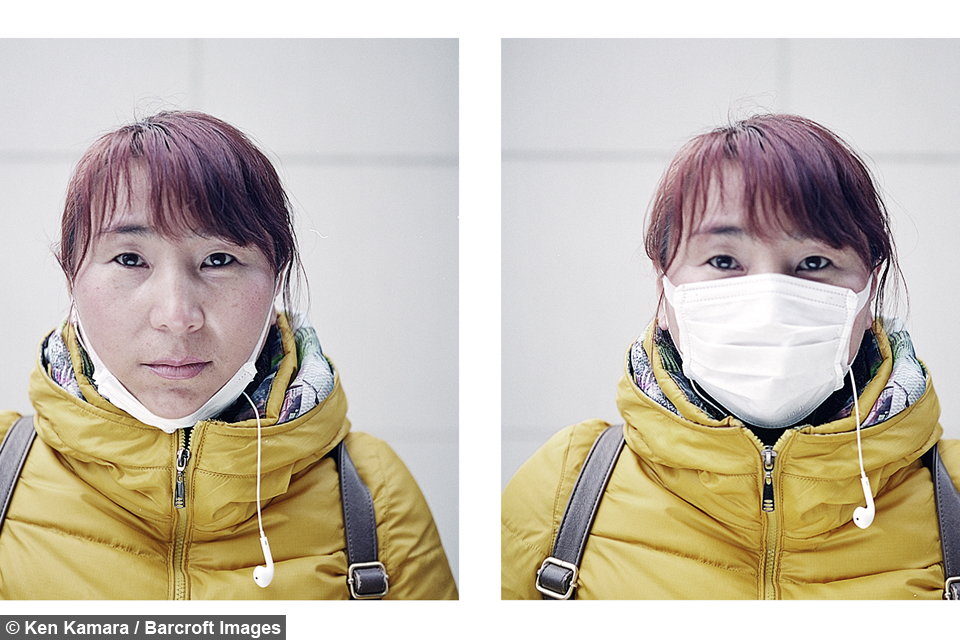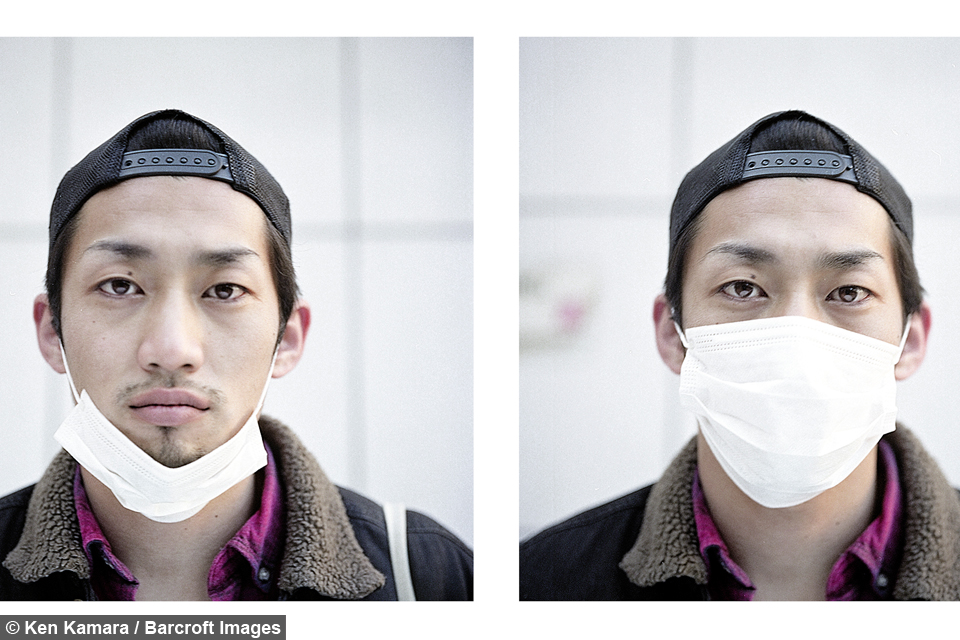Unmasked: Tokyo residents reveal the person behind the face mask
By Hannah Stevens @hannahshewans
Scroll down for the full story
Photographer Ken Kamara , who has a longstanding fascination with portraiture, was visiting the city when he decided to unmask Tokyo’s residents in this portrait series.
His project, entitled ‘Unmasked’, juxtaposes individual’s masked and unmasked personas.
Ken said: “I have a curious nature so I always want to see who is behind the mask.
“It’s a way of getting a bit closer to them too. Having these masks on you might think they are putting a barrier between themselves and the outer world.
“It’s not just a physical barrier though and it’s not always used as a barrier against smog.”
Using face masks in Japan is often associated with protection against the smog that looms over Tokyo, but this is not their only purpose.
Face masks are often used to prevent the spreading of germs when people are sick but cannot miss work, however, in recent years the masks have become a fashion accessory for some and a way to avoid interaction for others.
Ken said: “I think there are many elements to it, for some people it could be fashion, for others it is a psychological barrier and for others it is the smog.
“People have lots of reasons why they use them and it’s very individual, but I wanted to focus on the faces and the individuals behind the masks, not the reason they were wearing them.”
In London, where chatting to fellow commuters is usually met with a glare, the masks could be seen as more obstructive for open communication, but Tokyo’s inhabitants have grown used to them.
The photographer said: “Social interaction is always challenging, with or without masks.
“We in the UK are so used to looking at people directly, but in Tokyo the people are so used to having both sides of it - masks on or off - that they are used to communicating that way.
“There are so many reasons that they wear them, but they are so accepting of the fact that it’s each person’s choice.”
Using an analogue camera and a hastily made sign, London born Ken charmed his potential subjects with broken Japanese and hand gestures.
Even though Kamara sometimes struggled to convince residents to pose, it was a simple process once he had them sat down.
He said: “People were quite cooperative and happy to participate once they committed.
“They don’t do half and half though, they either go all in or they are not interested at all.”
As Tokyo’s smog problem endures and the masks infiltrate the fashion industry, the number of people using them is growing and in turn residents create dual identities - masked and unmasked.
Ken said: “I think it’s all about connecting with individuals. With masking and unmasking you get two types of connection.
“When you have the reveal of the person been the masks you see a different side of them.
“There’s no direct message as such but there’s an opportunity to connect with an individual - an opportunity to get to know an individual behind their mask.”
